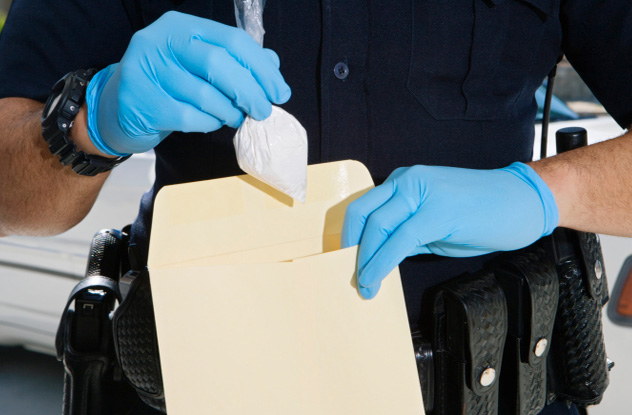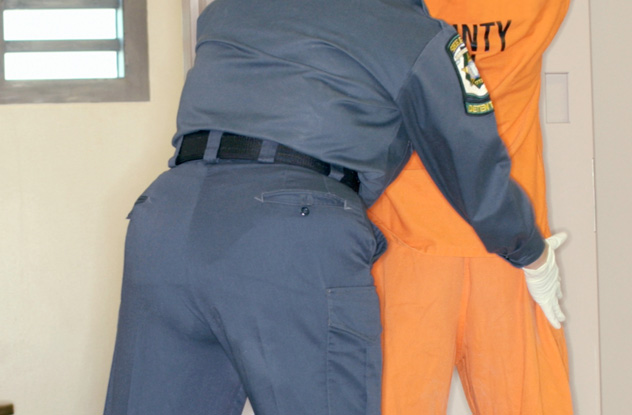 Weird Stuff
Weird Stuff  Weird Stuff
Weird Stuff  Our World
Our World 10 Archaeological Discoveries of 2025 That Refined History
 Weird Stuff
Weird Stuff 10 Fascinating Facts You Might Not Know About Snow
 Miscellaneous
Miscellaneous Top 10 Things Crypto Was Supposed to Change & What Actually Did
 History
History 10 Huge Historical Events That Happened on Christmas Eve
 Music
Music 10 Surprising Origin Stories of Your Favorite Holiday Songs
 History
History 10 Less Than Jolly Events That Occurred on December 25
 Weird Stuff
Weird Stuff 10 Funny Ways That Researchers Overthink Christmas
 Politics
Politics 10 Political Scandals That Sent Crowds Into the Streets
 Weird Stuff
Weird Stuff Ten Bizarre Facts About The Doge Meme
 Weird Stuff
Weird Stuff 10 Weird Things People Used to Do at New Year’s
 Our World
Our World 10 Archaeological Discoveries of 2025 That Refined History
 Weird Stuff
Weird Stuff 10 Fascinating Facts You Might Not Know About Snow
Who's Behind Listverse?

Jamie Frater
Head Editor
Jamie founded Listverse due to an insatiable desire to share fascinating, obscure, and bizarre facts. He has been a guest speaker on numerous national radio and television stations and is a five time published author.
More About Us Miscellaneous
Miscellaneous Top 10 Things Crypto Was Supposed to Change & What Actually Did
 History
History 10 Huge Historical Events That Happened on Christmas Eve
 Music
Music 10 Surprising Origin Stories of Your Favorite Holiday Songs
 History
History 10 Less Than Jolly Events That Occurred on December 25
 Weird Stuff
Weird Stuff 10 Funny Ways That Researchers Overthink Christmas
 Politics
Politics 10 Political Scandals That Sent Crowds Into the Streets
 Weird Stuff
Weird Stuff Ten Bizarre Facts About The Doge Meme
10 Wily Schemes Pulled Off By Prisoners
Prisons serve an ugly but necessary function, simultaneously punishing people who flout the law and providing a protective barrier between dangerous individuals and the society they imperil. But for the inmates, incarceration is sometimes little more than an opportunity to hatch outlandishly illegal ideas. While ideally a corrections facility is the last place where a major criminal ploy should successfully take root, inmates sometimes outwit law enforcement with frightening guile and effectiveness. In such cases, a prison becomes little more than a minor hurdle in the race to ill-gotten freedom—or, worse yet, just another base of illegal operations.
10An Underground Business Based Around Fake Release Papers
Every day, untold numbers of jailbirds dream of one day flying free by hook or by crook. But due to lack of ingenuity or resources, few ever succeed at leaving on their own terms. The same can’t be said for a group of industrious convicts held at the Franklin Correctional Institution in Carabelle, Florida, who managed to make a business out of forging early release papers, leaving the Florida Department of Corrections red-faced and flabbergasted.
The system relied heavily on smuggled cell phones and outside assistance. Prisoners would use the phones to request phony release orders from collaborators, who printed and mailed the orders to the prison. The whole process was estimated to cost about $8,000.
Things came to a head after two inmates serving life sentences for murder managed to waltz right out of prison with fake releases in 2013. But the release order scheme had been around at least since 2009, when Nydeed Nashaddai managed a brief escape from prison and began teaching other convicts how to do the same.
While all off the escapees who applied Nashaddai’s tactics were ultimately apprehended, this was a huge PR blow for the Florida prison system. Shouldn’t somebody have tried to confirm that the release forms were accurate before letting convicted murderers go free?
9Thousands Of Inmates Defraud The Government For Millions Of Dollars

Prison inmates don’t seem likely candidates for tax fraud. They’ve already been sanctioned by the government and should be under scrutiny; many inmates probably don’t earn enough to warrant a sizable tax refund. But the 91,000 prisoners who tried to bilk the federal government out of nearly $760 million dollars in 2010 suggest a very different story.
With a few fudged figures on the income declaration line or the aid of a stolen identity, prisoners have been convincing Uncle Sam to cough up unwarranted tax compensation for years, and the plunder is only increasing. Between 2009 and 2010, the amount of money lawbreakers tried to con out of the IRS from behind bars skyrocketed from $295 million to $758 million, as prisoners apparently realized prisons keep shoddy inmate records and the IRS can be painfully gullible. Out of that massive figure, inmates managed to get $35 million without the IRS catching them.
One inmate swindled the IRS out of $3 million by claiming he was owed compensation for wages withheld during employment at a fake company. Another asked for $139,644 and received $54,814, shared with prisoners for whom he had fabricated tax forms on a typewriter.
8A Surprisingly Lucrative Jail Phone Glitch

In April 2011, 32-year-old Larry Stone did time at Florida’s Lake County Jail for property damage. During his stint, Stone made a surprising discovery: Whenever his call went unanswered, he was reimbursed for double the cost of the original call. Unwilling to pass up such a bizarre chance to score some quick cash, Stone spent hours dialing long-distance numbers and hanging up.
The surplus reimbursements piled up. After three hours making bogus calls to places as far away as Canada, Stone was $1,250 dollars richer. It was more than enough for Stone to post bond and walk right out of jail with money to spare.
Seeing Stone’s unbelievable success, a reported 256 additional inmates began flooding the prison phone lines with hang-up calls. If Stone’s stunt was any indication, then the jail must have coughed up hundreds of thousands of dollars. Inevitably, authorities noticed an absurd hike in uncompleted inmate calls and put two and two together, just in time to prevent another inmate from posting a $1,400 bond on the jail’s dime. Stone, realizing that his days on the street were numbered, voluntarily returned to police custody and prepared to face more charges.
Luckily for Lake County Jail, all of the reimbursements were returned, and the glitch was remedied. But after such a potentially costly bungle, officials indicated plans to change phone service providers. We have no doubt that that was the right call.
7A Con’s Computer Fraud Deceives Expert Investigators

When convicted computer fraudster Steven Hutzenlaub was transferred from a Fort Lauderdale corrections facility to a New York county jail, authorities knew that they were dealing with an accomplished criminal. But no one at the facility had been filled in on the stunt Hutzenlaub pulled two years prior in Florida, which is why he ended up doing it again in New York.
Hutzenlaub would call electronics stores pretending to represent a computer company looking to order laptops. Then, relying on stolen account information, he would order several computers, which were delivered to hotels and mailbox stores. From there, accomplices would accept the goods. Hutzenlaub managed to order more than $300,000 worth of laptops and in addition fraudulently arranged purchases of a Corvette and a Manhattan nightclub before authorities finally caught on and put the kibosh on his operation. But Hutzenlaub wasn’t finished being a royal pain in Lady Justice’s neck.
After managing to commit major fraud two different times in two different jails, he almost successfully convinced criminal investigators that a deputy officer employed at a Broward County, Florida jail had assisted in a jailbreak. Criminal experts bought a bogus tale of bribery and corruption that Hutzenlaub was feeding them in exchange for a reduced prison sentence. Investigators ultimately caught on to the ruse after an undercover operation. But by that time, they had wasted four months following up on a fake lead, once again outmaneuvered by a dauntingly resourceful prisoner.
6A Lone Inmate Defrauds Courts And Corporations With A Typewriter

Idaho police are exceedingly familiar with serial burglar and kleptomaniac Mark Brown. A seasoned criminal before the age of 18, Brown racked up an astonishing 60 thefts and burglaries by his early twenties, robbing homes and even the university in which he was enrolled. But after he was eventually handed a 116-year prison sentence for a life of unremittent burgling, Brown showed that he could be an incredibly effective thief from the confines of a prison cell with little more than a typewriter and a steady supply of newspapers.
Drawing from legal ads he found in newspapers, Brown crafted phony legal documents portraying himself as a rightful recipient of compensation in company bankruptcies and multimillion-dollar class action lawsuits. By fashioning himself as the representative of some nonexistent law firm and typing up bogus claims, the surprisingly convincing jailbird collected an impressive $64,000 in undeserved legal compensation. And thanks to a legal provision protecting inmates’ legal correspondences from being read by prison officials, no one had a clue where these mountainous sums of money were coming from.
Brown’s crafty exploits went uninvestigated for nearly five years, after which point the FBI began looking into his activities. The career criminal was once again brought to trial, where he pleaded guilty to charges of mail fraud and agreed to relinquish the tens of thousands he accumulated.
5Florida Inmates Use Jail Mail To Get High

Due to the constant potential for foul play, letters and packages sent to jail inmates undergo thorough scrutiny for contraband. But even the slyest corrections officer probably wouldn’t suspect the mail itself to be illicit material. The officials at Joseph V. Conte Jail in Pampano Beach, Florida were oblivious when a group of inmates at the facility was getting high off of drug-laced mail until one of the other convicts clued them in.
The system was simple. A pair of inmates, Gregory Golden and Dean Aubol, would receive postcards treated with a substance called 25I-NBOMe, which mimics the hallucinogenic effects of LSD. The paper would be torn into as many as 250 pieces and sold in exchange for commissary items or a $10 fee. According to the inmate who exposed the operation, recently released inmate William Hahne was in charge of preparing the cards, which could be identifiable by elaborate illustrations made with the drug.
After being reported, Golden and Aubol fessed up to their misdeed in court while Hahne—who has a history of mental illness—claimed to have aided them under the mistaken belief that he was working with the government. Hahne’s case has yet to be resolved, and his comrades in crime are set to be sentenced in April 2015. However things pan out, it’s probably safe to assume that none of them will be getting any postcards in the near future.
4Intentionally Rearrested To Smuggle Drugs

Turning snail mail into a narcotic boasts a sophistication that we don’t normally associate with random crooks. But getting arrested to commit a crime hits a level of subterfuge worthy of Batman villains. Yet throughout the state of California, convicts are intentionally violating the terms of their parole to smuggle drugs to other inmates.
Ironically, the operation hinges on legislation intended to reduce the amount of time parole violators spend locked up, freeing up space in state penitentiaries to hold the most dangerous criminals. Described as the “prison realignment” law, the provision allows for a practice known as “flash incarceration,” whereby criminals who violate parole spend a brief 10 days in a county jail as opposed the months they used to spend in state prison. Enterprising convicts saw this change as an opportunity to bolster the jailhouse drug racket by sneaking narcotics into the prison during brief incarceration periods.
Jails have been caught off guard by the counterintuitive way some inmates have gamed the system. As a result, some counties have experienced tremendous increases in inmate drug infractions. The most dramatic increase was in Orange County’s corrections system, where drug cases more than quadrupled over a three-year period. In the face of this unexpected predicament, jail officials have upped security measures but have yet to answer the more trying question: How do you punish a criminal who wants to be in jail?
3Multimillion-Dollar Credit Card Fraud

Overcrowding has plagued the US prison system for longer than some of the people reading this have been alive. And in the 1990s, Montgomery County, Pennsylvania’s maximum-security state exemplified that predicament. Struggling to accommodate a lethal menagerie of convicted murderers, robbers, and other violent offenders, the facility suffered not only from a glut of inmates but also a technologically outdated phone system. Unfortunately, that tandem of vulnerabilities was ripe for abuse by a group of 25 prisoners and civilian accomplices who together orchestrated a $2 million credit card scam between 1993 and 1995.
The scheme worked like this. Inmates would make collect calls from prison to three-way calling systems organized by their co-conspirators on the outside, whereupon the inmates would place calls to various restaurants, hotels, and other businesses. Pretending to be credit card company representatives, they would convince these various establishments to provide customer credit card account information, which the inmates could use to purchase electronics, jewelry, and gold coins that were in turn sold on the black market. In addition to this rather intricate ploy, a former bank employee provided further stolen account info.
The inmates benefited from the fraud in diverse ways, with some using their illegal earnings to support families and others advancing their status in prison hierarchies. Sometimes, they simply purchased luxuries for themselves to enjoy while behind bars. But it all came crashing down after gold coin merchants reported dubious transactions to postal officials, who alerted police. The 25 men were brought to trial, and many were convicted. But for some defendants, the outcome made little difference, as they were already serving life sentences.
2Hundreds Of Inmates Work With Corrections Officers To Scam People

Imagine a stranger calls you on the phone claiming to be a police officer with bad news. Apparently, you missed jury duty or are wanted by the police in connection with a crime and are now facing jail time. Luckily, you can rectify the problem monetarily by sending in a prepaid debit card or handing over your credit card information to pay off a fine.
Of course, it’s a phone scam, by what you can only imagine is some two-bit crook operating from a shady location. But would you expect that crook to be calling from prison on an illegal cell phone with the blessing of a crooked corrections officer? That’s precisely what happened to residents in at least 12 different states when hundreds of inmates across two Georgia prisons teamed up with prison guards in a massive phone scam ring.
The scam initially looked like the handiwork of just two people, Autry State Prison inmate Covian Camp and his self-described girlfriend, a corrections officer at Wheeler State Prison named Clarinda Carter. The pair was exposed after numerous residents in Bergen County, New Jersey reported receiving distressing calls about owing fines for missing jury duty. At least one of those victims forfeited $1,000. Further investigation uncovered that Camp and Carter were part of a deep network of inmates and officers with access to at least 470 illegal cell phones.
Prisoners and complicit corrections officers split the loot. The inmates took $400 for every $500 the victims paid, and the officers kept the rest. It’s unclear exactly how much money the scam amassed in total, but at least one inmate was able to deposit $300,000 in his prison commissary account.
1A Baltimore Inmate Seduces And Recruits Female Prison Guards
Love makes you do crazy things. It inspired corrections officer Clarinda Carter from the previous entry to forsake her ethics and judgment. And at the Baltimore City Detention Center, love seems to be a major reason 13 female prison guards ceded power to a prison gang and in some cases even committed crimes on its behalf.
The guards in question had fallen under the influence of the Black Guerrilla Family (BGF), a violent gang with fingers across the United States and a penchant for drug dealing. Tavon White was the ringleader of Baltimore Detention Center’s BGF outfit. Along with fellow gang members, he manipulated a group of female inmates they deemed to have low self-esteem. Over time the group managed to get seven of the guards to actually deliver drugs to outside members of the gang, smuggle proscribed items like prescription drugs and cell phones, and assist in money laundering. In addition to convincing prison guards to violate the core of their duty, the apparently irresistible White also impregnated four of the women, two of whom even had his name tattooed on their bodies.
In total, 40 people, including 24 corrections officers, were implicated in the absolute implosion of law and order at the Baltimore Detention Center. All were tried and convicted. The mastermind, Tavon White, agreed to testify against guards and gang members alike in exchange for a lighter sentence. He received 12 years and was transferred to a different facility.








